Instruction
5 exercises to avoid during the golf season
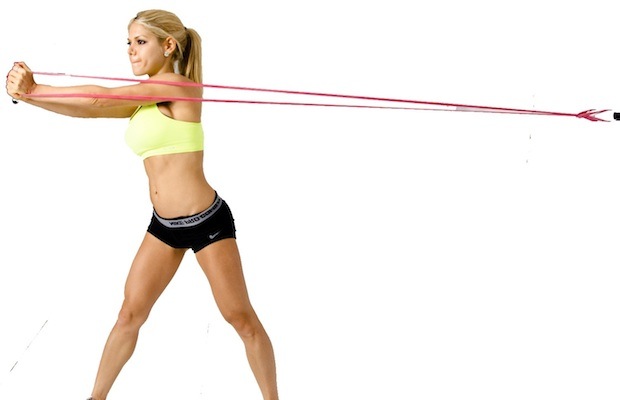
In a previous story, I explained my reasoning behind developing an improved approach to training during the season. A transitional approach gives you the best opportunity to avoiding overtraining while potentially maintaining performance gains made in the off-season.
As I mentioned earlier, you want to maintain the gains you made during a well-developed off-season program. However, you should understand that you will likely lose some strength and power during the season. For the most part this is inevitable, because your focus has shifted from making performance gains to making technical changes to lower your scores.
Why should you avoid some movements in your training regimen during the season?
First is the risk of injury. During the season, you ultimately want to score the best you can. However, if you injure yourself in the gym, then you run the risk of not competing the remainder of the season. Injuries usually don’t heal themselves. They require R.I.C.E. (rest, ice, compression and elevation) in some cases. Regardless, you will need to rehab to strengthen the affected area to ensure you avoid the recurrence of injury.
Another issue is fatigue. Ideally, your goal in the gym is to maintain flexibility and strength. During the season, you can continue to make stability and flexibility gains. However, pushing too hard to increase strength leads to the risk overreaching and overtraining. Both situations affect your game negatively. Over-fatigued muscles can become inhibited or restricted. In no regards is this good for your swing.
Here’s five strength or power-based movements that you should avoid during the season.
Back Squat
Reason: Its intended purpose is a heavy-weighted power movement.
Alternative: Use a sumo kettlebell squat (above).
Sit Up
You should avoid the sit-up at all costs!
Consider this: Golfers need thoracic rotational strength. Increasing strength here requires training of all core muscles. A better option would be a circuit of crunches, oblique kettlebell crunches and swiss ball back extensions. I also like oblique side crunches (above).
Shoulder Press
Heavy weight shoulder presses risk overuse and can decrease rotational flexibility if injured.
Alternative:Pendular movement (above). You can add a band once you’ve achieved a high level of flexibility.
Chest Press
Again, heavy chest presses are counterproductive during the season. Hypertrophy has a tendency to decrease flexibility.
Alternative: Band trunk rotation (above). This exercise is an eccentric, isometric chest activator. You use your pec muscles to assist in stabilization while you’re focusing on increasing rotational flexibility and maintaining strength.
Dead Lift
While a great off-season powerbuilder, the deadlift increases probability of injury, especially when fatigued from matches. I’m not willing to risk that with my athletes.
Alternative: You can modify this movement by eliminating weight, focusing on the movement form and adding a band for appropriate resistance or Romanian deadlifts (RDLs). Single leg Romanian dead lifts (above) are also a great option.
- LIKE7
- LEGIT1
- WOW1
- LOL5
- IDHT0
- FLOP3
- OB0
- SHANK2
Instruction
The Wedge Guy: The easiest-to-learn golf basic

My golf learning began with this simple fact – if you don’t have a fundamentally sound hold on the golf club, it is practically impossible for your body to execute a fundamentally sound golf swing. I’m still a big believer that the golf swing is much easier to execute if you begin with the proper hold on the club.
As you might imagine, I come into contact with hundreds of golfers of all skill levels. And it is very rare to see a good player with a bad hold on the golf club. There are some exceptions, for sure, but they are very few and very far between, and they typically have beat so many balls with their poor grip that they’ve found a way to work around it.
The reality of biophysics is that the body moves only in certain ways – and the particulars of the way you hold the golf club can totally prevent a sound swing motion that allows the club to release properly through the impact zone. The wonderful thing is that anyone can learn how to put a fundamentally sound hold on the golf club, and you can practice it anywhere your hands are not otherwise engaged, like watching TV or just sitting and relaxing.
Whether you prefer an overlap, interlock or full-finger (not baseball!) grip on the club, the same fundamentals apply. Here are the major grip faults I see most often, in the order of the frequency:
Mis-aligned hands
By this I mean that the palms of the two hands are not parallel to each other. Too many golfers have a weak left hand and strong right, or vice versa. The easiest way to learn how to hold the club with your palms aligned properly is to grip a plain wooden ruler or yardstick. It forces the hands to align properly and shows you how that feels. If you grip and re-grip a yardstick several times, then grip a club, you’ll see that the learning curve is almost immediate.
The position of the grip in the upper/left hand
I also observe many golfers who have the butt of the grip too far into the heel pad of the upper hand (the left hand for right-handed players). It’s amazing how much easier it is to release the club through the ball if even 1/4-1/2″ of the butt is beyond the left heel pad. Try this yourself to see what I mean. Swing the club freely with just your left hand and notice the difference in its release from when you hold it at the end of the grip, versus gripping down even a half inch.
To help you really understand how this works, go to the range and hit shots with your five-iron gripped down a full inch to make the club the same length as your seven-iron. You will probably see an amazing shot shape difference, and likely not see as much distance loss as you would expect.
Too much lower (right) hand on the club
It seems like almost all golfers of 8-10 handicap or higher have the club too far into the palm of the lower hand, because that feels “good” if you are trying to control the path of the clubhead to the ball. But the golf swing is not an effort to hit at the ball – it is a swing of the club. The proper hold on the club has the grip underneath the pad at the base of the fingers. This will likely feel “weak” to you — like you cannot control the club like that. EXACTLY. You should not be trying to control the club with your lower/master hand.
Gripping too tightly
Nearly all golfers hold the club too tightly, which tenses up the forearms and prevents a proper release of the club through impact. In order for the club to move back and through properly, you must feel that the club is controlled by the last three fingers of the upper hand, and the middle two fingers of the lower hand. If you engage your thumbs and forefingers in “holding” the club, the result will almost always be a grip that is too tight. Try this for yourself. Hold the club in your upper hand only, and squeeze firmly with just the last three fingers, with the forefinger and thumb off the club entirely. You have good control, but your forearms are not tense. Then begin to squeeze down with your thumb and forefinger and observe the tensing of the entire forearm. This is the way we are made, so the key to preventing tenseness in the arms is to hold the club very lightly with the “pinchers” — the thumbs and forefingers.
So, those are what I believe are the four fundamentals of a good grip. Anyone can learn them in their home or office very quickly. There is no easier way to improve your ball striking consistency and add distance than giving more attention to the way you hold the golf club.
More from the Wedge Guy
- The Wedge Guy: Golf mastery begins with your wedge game
- The Wedge Guy: Why golf is 20 times harder than brain surgery
- The Wedge Guy: Musings on the golf ball rollback
- LIKE83
- LEGIT13
- WOW5
- LOL1
- IDHT0
- FLOP4
- OB1
- SHANK8
Instruction
Clement: Stop ripping off your swing with this drill!

Not the dreaded headcover under the armpit drill! As if your body is defective and can’t function by itself! Have you seen how incredible the human machine is with all the incredible feats of agility all kinds of athletes are accomplishing? You think your body is so defective (the good Lord is laughing his head off at you) that it needs a headcover tucked under the armpit so you can swing like T-Rex?
- LIKE0
- LEGIT2
- WOW2
- LOL0
- IDHT0
- FLOP0
- OB0
- SHANK2
Instruction
How a towel can fix your golf swing

This is a classic drill that has been used for decades. However, the world of marketed training aids has grown so much during that time that this simple practice has been virtually forgotten. Because why teach people how to play golf using everyday items when you can create and sell a product that reinforces the same thing? Nevertheless, I am here to give you helpful advice without running to the nearest Edwin Watts or adding something to your Amazon cart.
For the “scoring clubs,” having a solid connection between the arms and body during the swing, especially through impact, is paramount to creating long-lasting consistency. And keeping that connection throughout the swing helps rotate the shoulders more to generate more power to help you hit it farther. So, how does this drill work, and what will your game benefit from it? Well, let’s get into it.
Setup
You can use this for basic chip shots up to complete swings. I use this with every club in my bag, up to a 9 or 8-iron. It’s natural to create incrementally more separation between the arms and body as you progress up the set. So doing this with a high iron or a wood is not recommended.
While you set up to hit a ball, simply tuck the towel underneath both armpits. The length of the towel will determine how tight it will be across your chest but don’t make it so loose that it gets in the way of your vision. After both sides are tucked, make some focused swings, keeping both arms firmly connected to the body during the backswing and follow through. (Note: It’s normal to lose connection on your lead arm during your finishing pose.) When you’re ready, put a ball in the way of those swings and get to work.

Get a Better Shoulder Turn
Many of us struggle to have proper shoulder rotation in our golf swing, especially during long layoffs. Making a swing that is all arms and no shoulders is a surefire way to have less control with wedges and less distance with full swings. Notice how I can get in a similar-looking position in both 60° wedge photos. However, one is weak and uncontrollable, while the other is strong and connected. One allows me to use my larger muscles to create my swing, and one doesn’t. The follow-through is another critical point where having a good connection, as well as solid shoulder rotation, is a must. This drill is great for those who tend to have a “chicken wing” form in their lead arm, which happens when it becomes separated from the body through impact.
In full swings, getting your shoulders to rotate in your golf swing is a great way to reinforce proper weight distribution. If your swing is all arms, it’s much harder to get your weight to naturally shift to the inside part of your trail foot in the backswing. Sure, you could make the mistake of “sliding” to get weight on your back foot, but that doesn’t fix the issue. You must turn into your trial leg to generate power. Additionally, look at the difference in separation between my hands and my head in the 8-iron examples. The green picture has more separation and has my hands lower. This will help me lessen my angle of attack and make it easier to hit the inside part of the golf ball, rather than the over-the-top move that the other picture produces.


Stay Better Connected in the Backswing
When you don’t keep everything in your upper body working as one, getting to a good spot at the top of your swing is very hard to do. It would take impeccable timing along with great hand-eye coordination to hit quality shots with any sort of regularity if the arms are working separately from the body.
Notice in the red pictures of both my 60-degree wedge and 8-iron how high my hands are and the fact you can clearly see my shoulder through the gap in my arms. That has happened because the right arm, just above my elbow, has become totally disconnected from my body. That separation causes me to lift my hands as well as lose some of the extension in my left arm. This has been corrected in the green pictures by using this drill to reinforce that connection. It will also make you focus on keeping the lead arm close to your body as well. Because the moment either one loses that relationship, the towel falls.


Conclusion
I have been diligent this year in finding a few drills that target some of the issues that plague my golf game; either by simply forgetting fundamental things or by coming to terms with the faults that have bitten me my whole career. I have found that having a few drills to fall back on to reinforce certain feelings helps me find my game a little easier, and the “towel drill” is most definitely one of them.
- LIKE12
- LEGIT2
- WOW2
- LOL0
- IDHT0
- FLOP2
- OB0
- SHANK8
-

 19th Hole2 weeks ago
19th Hole2 weeks agoJohn Daly stuns fans into silence with brutal opening tee shot on PGA Tour Champions
-

 19th Hole1 week ago
19th Hole1 week agoThings got heated at the Houston Open between Tony Finau and Alejandro Tosti. Here’s why
-

 19th Hole2 days ago
19th Hole2 days agoTiger Woods arrives at 2024 Masters equipped with a putter that may surprise you
-

 19th Hole1 week ago
19th Hole1 week agoReport: Tiger Woods has ‘eliminated sex’ in preparation for the 2024 Masters
-

 19th Hole23 hours ago
19th Hole23 hours agoDave Portnoy places monstrous outright bet for the 2024 Masters
-

 19th Hole2 weeks ago
19th Hole2 weeks agoCharlie Woods finds it tough going on American Junior Golf Association debut
-

 19th Hole1 week ago
19th Hole1 week agoAddiction, spinal fusion, and scam artists – Everything Anthony Kim revealed in candid interview with David Feherty
-

 19th Hole6 days ago
19th Hole6 days agoAnthony Kim says doctors told him that he ‘may not have much time left’ ahead of LIV return

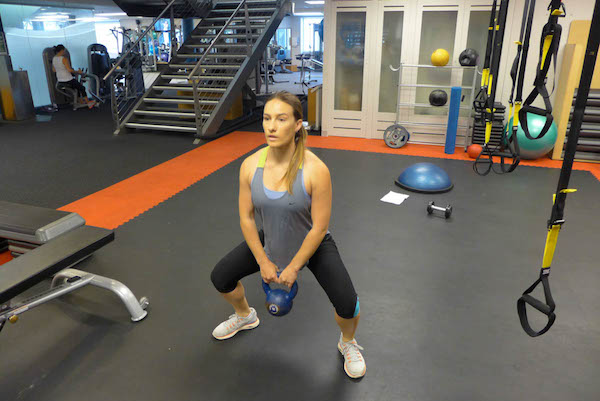
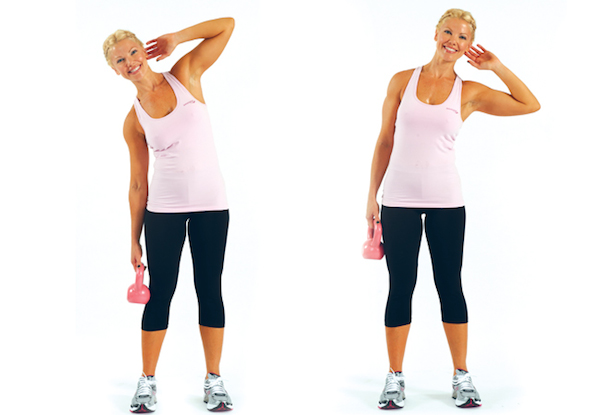
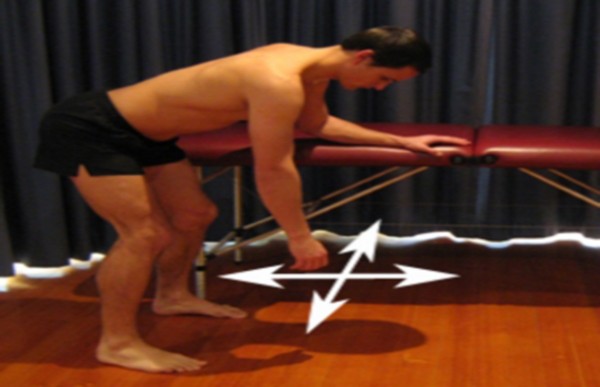
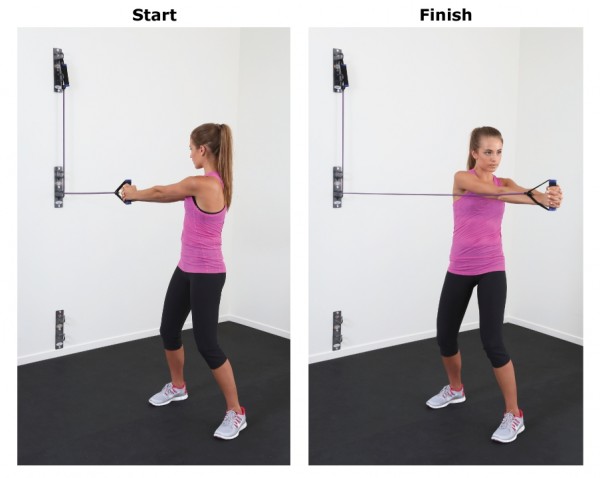
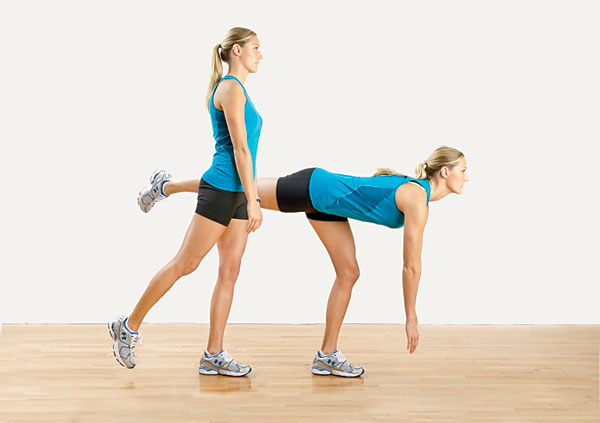














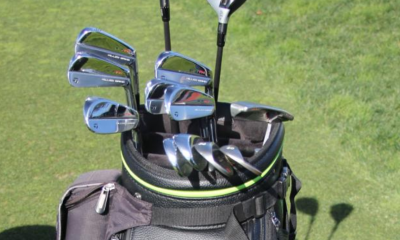

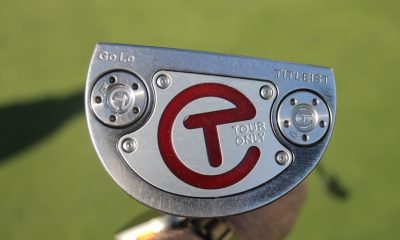

TwoWolvez
Aug 4, 2014 at 2:42 pm
Hi Chris,
First of all I want to say thanks for taking the time to write the article, which does have good and accurate information. I am a GC Am Tour player and beach body coach and am currently doing testing with some specific exercises and see how they help with golf. I have already used done of the exercises you mentioned and have noticed they helped me earlier this year when I did them.
Secondly, I find your responses to the critics very professional. Keep up the good work, and if possible I would like to discuss with you about my findings once my 2 month program is over.
To all the critics,
Can you please state your degree and area of expertise on the human body and how specific exercises help our hinder an athlete. Other than people doing random internet searches on the topics, I can’t see where anyone could contradict with authority what Chris stated. I train with a top PGA Instructor, and one of the first things we discussed was flexibility and light weight exercises over heavy weight exercises. Also doing functional exercises with bands helped me with functional strength and flexibility more than free weights ever have. There are many exercises needed for golf that are virtually impossible to do with free weights and can only be done with some type of resistance band, whether it be a band or Bowflex.
Over the last year, I personally did functional exercises with bands and my Bowflex and picked up nearly a 10% increase on all of my clubs. I am currently doing further testing on some other functional exercises to see how much more flexibility and distance I can gain, while maintaining good form.
Thanks,
TwoWolvez
TwoWolvez
Aug 4, 2014 at 2:44 pm
Sorry for any misspellings. Auto correct sucks.
Nick
Aug 1, 2014 at 7:05 pm
Woeful recommendations with paper thin justifications based on actually INCORRECT information.
Chest Press – Using a band trunk rotation exercise as a substitute because it is “an eccentric, isometric chest activator”. This is incorrect, using the wrong terminology and missing the point of the exercise completely.
Sit Ups – I agree are not ideal but are actually preferable to what you suggest as an alternative! Crunches are more likely to have a shortening effect on rectus abdomonis and oblique side crunches are possibly the worst suggestion for a uni lateral striking sport where the majority of players get adaptive shortening of the obliques and lats in their dominant side.
Back squat – it’s intended purpose totally depends on the load and volume used. Assuming it’s a heavy weighted power movement is firstly a contradiction (power is generated using light-medium weight and fast bar speed) and secondly a huge presumption. The back squat can have wide reaching benefits including improving stability, neural efficiency and core integration amongst others.
The overall theme of mitigating risk of injury by avoiding these exercise doesn’t even stand up. Performed with good form and appropriate load, the exercises your recommend steering clear of are actually a fantastic injury prevention tool.
Chris I highly recommend you go away and do some research, gain some experience working with golfers and then come back and make some recommendations based on what you read and observe. Right now you are offering advice which will actually inhibit the athletic development of people who choose to act upon it.
Chris Costa
Aug 2, 2014 at 9:03 am
Thanks, Nick. However, I suggest that you do the same, as none of those exercise inhibit development in your average individual. Sit ups are one of the most contraindicated movements in the history of exercise physiology and biomechanics. Yet, you’re sponsorship of spinal compression is more ideal?
Furthermore, neural efficiency can be improve without resistance. Simply completing the movements has the opportunity to facilitate proprioceptive adaptations.
jmichael204
Jul 31, 2014 at 9:44 am
I think what Chris is trying to say here is in every program you need some periodization. All athletes use this in there sports so that they can peak during competition. If you train 4 and 5 day/week “body building” training splits you will not have much left in the tank for the golf course. Now this doesn’t mean you can’t do squats or presses just maybe don’t be maximizing your intensity and volume. But it is also important to realize that putting variety into the mix with sumo squats push-ups etc can help you as well.
I can say this, I changed my routine this year and bought a set of kettlebells and a foam roller for “poor mans” massage and I train twice a week at most during golf season and my game has never been better. I am a +1 handicap now and 30 years old and sit in front of a computer %70 of the time at work.
Do you guys think all those tour pro’s during the peak tournament season are hitting the gym banging out max reps on the squat and deadlift rack in between tournaments?? They do functional movements/exercises related to there sport and ton of flexibility training and massage therapy to keep them in peak form during the season.
Chris Costa
Jul 31, 2014 at 11:33 am
Jmichael,
You’re absolutely correct. It is the method of periodization. Now, I will say that I don’t believe periodization to be the only way to define or develop athletic performance and it’s various attributes. In regards to “keeping athletes healthy”, many of the ideas out there are derivatives of periodization.
We want to supersede the expectations of form and function during the off-season when it is optimal to develop peak performance. Granted, there’s a fine line that exists between peak performance and injury risk, but as you said that is why people need to understand that protocols must change to correlated with lessening fatigue during the season.
Bluefan75
Jul 31, 2014 at 8:30 am
Chris, your response to Alex shows as much substance as your article. “Please don’t poison minds”? from the guy telling people to use bands instead of weights? This is the the kind of thing that keeps the infomercial industry alive and well.
But since you asked for research, read up on this:
http://startingstrength.com/articles/2013_strength_science_sullivan.pdf
But thanks for posting the first picture.
Chris Costa
Jul 31, 2014 at 9:05 am
Bluefan75,
What is your personal issue with bands? The shakeweight and selector from bowflex were infomercials as well. They are not in any relation to bands. Physical therapists utilize bands for rehabilitative strength. How can you discount that for the desk jockey or weekend warrior? Are we talking about average joes or pros here? Even pros are asked to work with banded resistance.
Additionally, what you linked is not research. Its a publication that tries to find errors within research studies. In fact, there’s no research within the document that supports their own claim of false information from the research study. Not all research points in the correct direction. However, its someone’s or some groups interpretation of what they found in testing. Hence the reason why there’s constantly new studies published. Still doesn’t validate anything that you or Alex mentioned.
Bluefan75
Aug 1, 2014 at 11:21 am
Um, let’s see here, what kind of strength gain does a band give you? They are fantastic for stretching. Unless you have a very hard time lifting basically anything off the ground, a band is not going to gain you any strength. And rehab? You’re using the fact they are used in rehab to justify them?
As to the topic of research. I did not see any research cited in your article either. You’ll forgive Alex or I if we don’t don’t consider “because Chris said so” to be enough.
You are telling people who are lifting actual weights to stop once the golf season rolls around, because they *might* get hurt, so do these ones instead. Exercises that do basically nothing other than allow someone to check off a box if they are even slightly more than a sedentary blob.
You’d likely have Alex’s support, and you would havce mine, had you said you may want to back off the frequency or the weight during the season. That is sensible and reasoned. But telling people who are lifting or about to lift to do that stuff instead? Of course, like the barbell itself, it’s boring, doesn’t hold attention, doesn’t get an article published, and doesn’t get people to pay you for it.
Fred
Jul 31, 2014 at 5:22 am
What a load of poo. Pretty much EVERY weekend warrior needs more of the above.
Pingback: 5 Workouts to Avoid While Golf Season is On-going - I'd Rather Be Golfing
Rusty Putter
Jul 30, 2014 at 9:46 pm
Chris gotta agree w Alex, you missed the mark.
Kyle Adams
Jul 30, 2014 at 7:44 pm
This is almost universally terrible advice. There is no evidence of injury risk with any movements stated.
Josh
Jul 30, 2014 at 5:53 pm
Yes Alex! Thank you for that. All of that.
Alex
Jul 30, 2014 at 5:15 pm
This is almost completely wrong.
(1) Back squats are one of the best exercises for building power, CNS endurance, core strength, and counter-rotation force. I don’t understand why the fact that squats are a great “heavy-weighted power movement” means that you shouldn’t do them during the golf season.
Do baseball or football players (both analogous to golf because they require rapid force generation followed by periods of relative inactivity) stop squatting/deadlifting during their season? Of course they don’t. Sure, these athletes aren’t going to go for a 1 rep max deadlift after a game, but that’s more common sense and program management than a flaw in the exercise.
(2) I’ll give you situps, though pallof presses, cable crunches, suitcase carries, and other weighted exercises would be far more effective and yield better results.
(3), (4), and (5) all have the same flawed logic: these exercises can injure you if you do them incorrectly. So what? Pretty much every exercise can injure you if you don’t have good form. I would expect a trainer with a client to teach the client proper form for exercise that are demonstrably the most effective movements one can do, not avoid them because the client doesn’t know how to do them properly.
Also, 99.99% of golfers would benefit from an increase in muscle mass. Most are desk jockeys or couch potatoes. The number of golfers who would see an adverse change in their swing from increased muscle mass is minimal, and doing some heavy lifting isn’t going to transform a middle manager into a world’s strongest man competitor. This insinuation reminds me of the oft-repeated (and completely incorrect) belief that lifting small weights gets you “toned” while lifting heavy weights make you “bulky,” which is objectively false.
While I’m a proponent of shifting reps/weight depending on a person’s diet, activity level, and goals, heavy lifting and low rep compound movements is an integral part of any legitimate program to build strength.
This article is one of many that assumes golfers are dainty flowers that will snap if they’re required to lift anything heavier than their own body weight or a pink kettlebell. That assumption is wrong; it leads to inefficient and ineffective training programs, minimal (if any) progress, and may even be counterproductive by increasing localized inflammation due to excessive reps.
You can achieve far better results in far less time using far more effective exercises than the ones suggested above.
Mizzy
Jul 30, 2014 at 6:10 pm
Excellent response.
Workouts that seem easy will net inefficient results.
Aaron
Jul 30, 2014 at 8:25 pm
Well said, Alex. Couldn’t agree more.
cb
Jul 30, 2014 at 10:15 pm
Chris A+ for the first photo but have to give another +1 to Alex. I do agree with you Chris that people can be injured doing some of those power movements but that is almost always do to bad form or trying to lift too much. i agree with alex, with a proper trainer who teaches you the correct form, these exercises will give you effortless power. Now i could see the argument made that if you play multiple times a week, and have never lifted before, then your golf game will be negatively impacted if you start doing the power exercises. because you will for sure have some muscles mad at you for working them. but once you get in a regular routine then that won’t be an issue.
Chris Costa
Jul 31, 2014 at 7:34 am
Alex,
Thank you for your candid response.
Contrary to your beliefs, you have not validated any of your claims with research. If you know what you assume to know about sports performance, then yes you would realize that professional athletes are NOT back squatting during the season. It’s ludicrous that you even presume with false assumption. They don’t 1RM during the season, period.
Why are sit-ups bad? Yet, farmer’s walks (an isometric contraction) do what for golfers? Isometric falls under an energy system utilization that doesn’t even apply to golfers.
ANY EXERCISE CAN CAUSE INJURY. It’s about minimizing risk and player safety.
“tone” and “bulk”?? Geez you sound like a weekend seminar trainer…. Increasing lean body mass hurts NO athlete. Never once did I say that. If you dont gain LBM from a sumo squat, then you are doing something wrong. How is the desk jockey going to oxidize fats?
There’s no assumption here, there’s a shift or transition needing to take place in the thought process here. Excessive repetitions? What are you referencing? Crossfit? You’re out in left field on this one, Alex. In fact, I don’t believe I mentioned anything about a repetition count.
Train yourself however you see fit, but please don’t poison the minds of others with your babbling. You provide little scientific claim to back up any of your own believed legitimate assumptions. Please take your pink kettlebell to the corner. If you follow Alex’s ideas, you’ll likely result in chronic fatigue and injury. But what do I know??
Alex
Jul 31, 2014 at 12:23 pm
I wrote a very lengthy reply earlier today, but it appears that the moderators didn’t approve it or the computer ate it. I’m not really interested in writing another novella, so I’ll write out the cliffnotes version this time.
As a general matter, it’s exceedingly unlikely that any golfer would require substantial amounts of recovery time. “Chronic fatigue” simply isn’t a concern when a golfer’s season consists of riding around in a cart for a few hours–punctuated by the occasional swing. A golf round doesn’t put nearly the amount of wear and tear on a body as a contact sport; that’s so self-evident I don’t believe it requires a citation.
I referenced the (false) “tone” and “bulk” dichotomy because you implicitly endorse it. After all, you say that golfers should avoid “chest presses” because it causes hypertrophy and may reduce flexibility. That sounds a lot like recommending that golfers do “toning” work (aka low weight high reps) rather than “bulk” work (aka effective exercises). You claim that “[i]ncreasing lean body mass hurts NO athlete. Never once did I say that.” Well, hypertrophy is essentially synonymous with lean body mass, so I think you did say that increasing LBM may harm a golfer’s game.
Additionally, it seems that you didn’t read my comment correctly. I didn’t say that golfers should do farmer’s walks (though they’re great for grip work); I said that golfers should do suitcase carries. Suitcase carries help with rotary stability by strengthening the obliques. Strong obliques are great because they help a golfer’s torso stay “quiet” during the swing. Weak obliques may result in a golfer swaying or a “reverse C” move due to the difference between lower body power and the upper body’s ability to resist that power.
As for citing research, c’mon bro. Your article doesn’t even come close to providing a skeletal justification for what you’re advocating. This is a puff piece on a golf website; I don’t expect peer reviewed papers, and you shouldn’t expect me to provide the same. Sure, I could get paper names from sources like the Journal of Strength and Conditioning, but what’s the point? It’s behind a paywall, so nobody other than subscribers could read the actual article anyway.
Let me make a golf analogy to the non-fitness dudes. This guy is like David Ledbetter or Joe Morgan; he’s wedded to conventional wisdom and refuses to sign the separation papers. The methodology he’s advocating is ineffective and should be disregarded.
If you were pitching me and told me that “you should understand that you will likely lose some strength and power during the season. For the most part this is inevitable, because your focus has shifted from making performance gains to making technical changes to lower your scores,” I’d legit involuntarily scoff. Oh, what stresses I place on my body by playing a round of golf.
I live in Atlanta, so the golf season essentially lasts all year. Does that mean I should never lift heavy? Should I take two months off from golf to make sure I get enough rest from the herculean task of lifting more than my bodyweight? Does the 60+ hours a week I spend sitting down not provide adequate recovery time?
What you’re advocating is simply incorrect. There’s nothing wrong with periodization, but no decent program is going to recommend eliminating (as opposed to reducing) weight while deadlifting or the other misguided ideas you advocate in this article.
Chris Costa
Jul 31, 2014 at 1:17 pm
You could go on and on, but you lost any and all credibility when you mentioned sitting in a chair 60+ hours per week and advocating deadlifts. Not only is that poor advocacy, but it’s a recipe for disaster.
You’re promoting risk to the recreational golfer. That speaks mountains in poor judgement. Feel free to put yourself at risk, but spare others. I advocate health and safety.
Travis
Jul 31, 2014 at 12:00 pm
Yup,I’ll stick with squats, deadlifts, bench press, barbell rows, shoulder presses and 300 yard drives. And leave the bands/pink kettlebells for the guys who bomb it 220.
The combination of strength and speed with good joint mobility has greatly improved my ball striking.
Jafar
Jul 30, 2014 at 4:40 pm
If you want to train year round for golf, when do you phase in a strength building program and for how long? Do you not swing a golf club at all during this time period?
Thanks, good info here.
Chris Costa
Jul 30, 2014 at 8:23 pm
Jafar,
Build maximal strength in “your” off-season, as it seems everyone has different off seasons depending on their climate.
It would be wrong to assume that all technical golf training be avoided during a strength training off-season. You can and should continue to work on techniques in small, acute doses.
Ken
Jul 30, 2014 at 12:42 pm
This is great information. I come from a heavy workout background. The thing I would love to see is a sample in -season workout plan. By this I mean, # days of the week, set and rep plans, etc.
Chris Costa
Jul 30, 2014 at 8:24 pm
Ken,
You can email me directly.
Ronald Montesano
Jul 30, 2014 at 12:03 pm
How do you feel about kettle bells during the season? Which exercises with kettle bells would you prescribe during the season?
Chris Costa
Jul 30, 2014 at 8:27 pm
Ronald,
Kettlebells are great. As you see the girl performing the sumo squat is utilizing a kettlebell for resistance. As with any movement, especially power, anatomical form is paramount. Yours will be different from someone else, but ensuring that you are following patterns that are not conducive to increased risk of injury is key. Basically, if you know how to use them with proper form, avoid overstressing the PCr system, and operate in a safe manner then Im all for kettlebells.
Chris Guy
Jul 30, 2014 at 11:20 am
What are your thoughts on a plyometric based program
Chris Costa
Jul 30, 2014 at 8:34 pm
Chris,
Plyo is to build speed through quick-footed agility. The utility was designed to assist in creating explosive power. For me, its clearly necessary in the off-season. Under supervision, I think its a great in-season tool as well, bearing that you are avoiding other shocks to the PCr energy system. However, current research doesnt give clarity to if it will address maintaining maximal strength, so optimally you’d want to focus majority of your plyo efforts in the off-season. While, utilizing other agility and flexibility drills to facilitate those gains throughout the season. As with anything you could still overtrain while focusing on plyo alone, so just be cautious for the signs of chronic fatigue.